What I am trying to achieve is data for historgram that would count values into specific ranges. For category A value range 1-100 and for category B value range 0-125 where value for category C = 5. The problem I have that is data in multiplerows and I need to filter first on C and then count values into ranges to display histogram.
To get counts lets say per 10 seconds looking like this

Code to generate data:
CREATE TEMP TABLE sample (
ts timestamp
,category varchar(2)
, val int)
insert into sample values
(to_timestamp('01.01.2018 08:00:01', 'dd-mm-yyyy hh24:mi:ss'), 'A', 12),
(to_timestamp('01.01.2018 08:00:02', 'dd-mm-yyyy hh24:mi:ss'), 'A', 44),
(to_timestamp('01.01.2018 08:00:03', 'dd-mm-yyyy hh24:mi:ss'), 'C', 1),
(to_timestamp('01.01.2018 08:00:04', 'dd-mm-yyyy hh24:mi:ss'), 'B', 24),
(to_timestamp('01.01.2018 08:00:05', 'dd-mm-yyyy hh24:mi:ss'), 'B', 111),
(to_timestamp('01.01.2018 08:00:06', 'dd-mm-yyyy hh24:mi:ss'), 'C', 5),
(to_timestamp('01.01.2018 08:00:07', 'dd-mm-yyyy hh24:mi:ss'), 'A', 145),
(to_timestamp('01.01.2018 08:00:01', 'dd-mm-yyyy hh24:mi:ss'), 'B', 16),
(to_timestamp('01.01.2018 08:00:01', 'dd-mm-yyyy hh24:mi:ss'), 'C', 47),
(to_timestamp('01.01.2018 08:00:02', 'dd-mm-yyyy hh24:mi:ss'), 'C', 5),
(to_timestamp('01.01.2018 08:00:02', 'dd-mm-yyyy hh24:mi:ss'), 'B', 34),
(to_timestamp('01.01.2018 08:00:03', 'dd-mm-yyyy hh24:mi:ss'), 'B', 111),
(to_timestamp('01.01.2018 08:00:03', 'dd-mm-yyyy hh24:mi:ss'), 'C', 5),
(to_timestamp('01.01.2018 08:00:01', 'dd-mm-yyyy hh24:mi:ss'), 'A', 19),
(to_timestamp('01.01.2018 08:00:01', 'dd-mm-yyyy hh24:mi:ss'), 'B', 46),
(to_timestamp('01.01.2018 08:00:01', 'dd-mm-yyyy hh24:mi:ss'), 'C', 57)
I thought if I pivot data like so
s
elect
ts,
category,
case when category = 'A' then val end as "A",
case when category = 'B' then val end as "B",
case when category = 'C' then val end as "C"
from sample
order by ts
then have problem with pivot nulls

